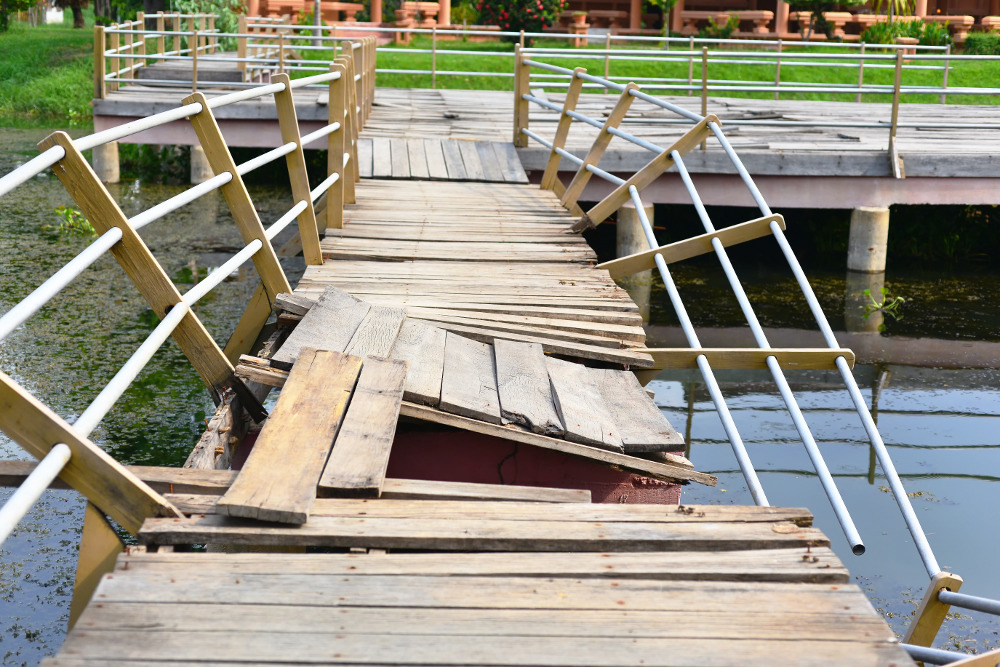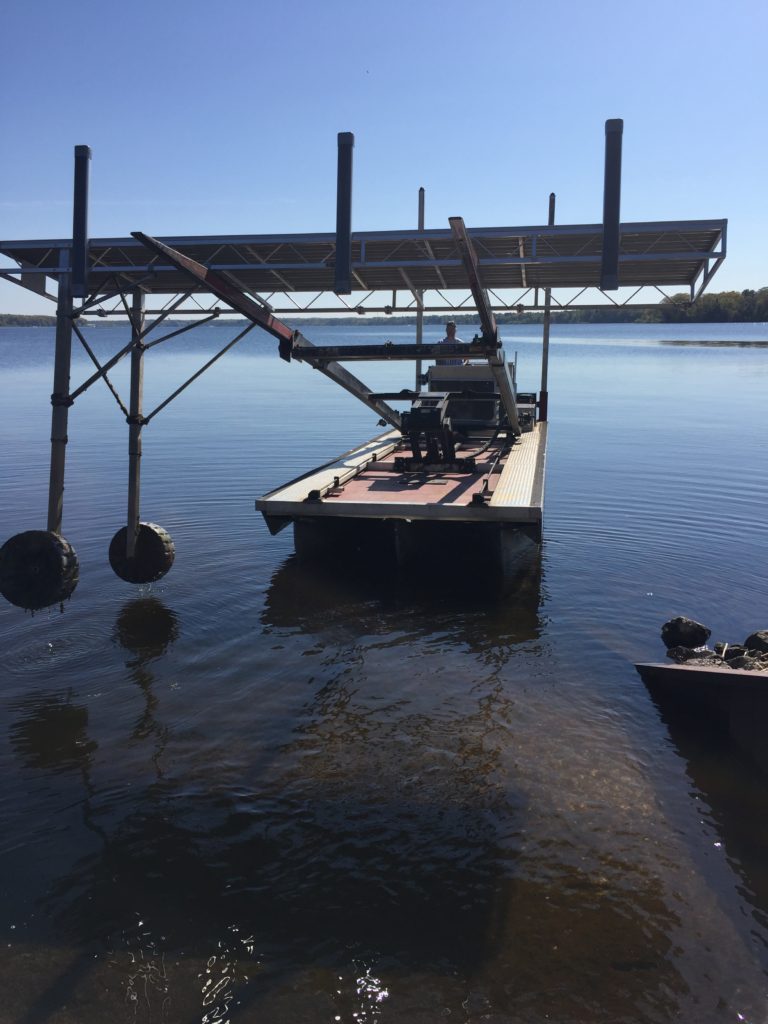Professional Insights on Resilient Dock Repairs Solutions
Wiki Article
Effective Dock Repair Work Techniques: Making Sure Structural Stability
Making sure the structural integrity of docks through efficient repair service strategies is critical for the long life and security of aquatic facilities. This includes a multi-faceted method beginning with extensive inspections using sophisticated innovations like sonar devices and from another location operated vehicles (ROVs) to spot both visible and concealed problems. Consequently, choosing the right repair products, such as corrosion-resistant alloys and composite products, is crucial for resilience. Architectural support techniques, consisting of the execution of cross-bracing systems and load-distribution plates, play an important role in mitigating stress and anxiety points. Nonetheless, the relevance of these techniques comes to be obvious when checking out innovative repair service methods and preventative upkeep approaches.Assessing Dock Damage
Analyzing dock damage is an important very first step in making sure the structural honesty and security of any kind of docking facility. This preliminary evaluation involves a detailed examination to determine both noticeable and hidden problems. Trick facets to examine include the dock's foundation, pilings, decking, and hardware. Each element needs to be looked at for indicators of wear, rot, deterioration, or other forms of degradation that can compromise the structural stability.Structural engineers or qualified inspectors generally perform these assessments using specialized strategies and tools. For circumstances, underwater assessments could utilize sonar tools or from another location ran lorries (ROVs) to identify immersed damages. Over water, visual assessments are complemented by using dampness meters and various other diagnostic devices to discover underlying problems not instantly noticeable to the naked eye.

Choosing Repair Service Products
Picking the appropriate repair service products is a crucial action in the dock repair procedure, one that directly affects the long life and efficiency of the fixed framework. Product option need to be driven by factors such as ecological conditions, load-bearing demands, and compatibility with existing dock elements. For circumstances, timber is a conventional selection for anchors because of its all-natural durability and visual charm. However, selecting the best kind of wood, such as pressure-treated lumber or normally rot-resistant varieties like cedar or teak wood, is critical to hold up against marine settings.Along with timber, composite materials are progressively popular due to their longevity and reduced maintenance needs. Composites, typically made from a mix of plastic and wood fibers, supply exceptional resistance to rot, insects, and UV damages. For metal anchors, choosing corrosion-resistant alloys such as galvanized steel or marine-grade light weight aluminum is necessary to avoid corrosion and guarantee architectural integrity in saline water problems.
Epoxy materials and marine-grade sealants are vital for repairing fractures and securing joints, providing a water resistant obstacle and enhancing the dock's general toughness. By diligently selecting top notch products, dock repairs can accomplish lasting outcomes, thereby protecting against future deterioration and making certain safe, reputable usage.
Architectural Support Strategies
Reliable structural reinforcement techniques are vital in making sure the security and long life of dock fixings. One fundamental method involves the use of steel or composite support bars (rebar) within concrete frameworks. Rebar provides additional tensile strength, preventing cracks and distributing loads more evenly. This method is particularly effective for docks revealed to hefty loads or rough ecological problems.One more vital method is the application of fiber-reinforced this hyperlink polymers (FRP) These materials supply high strength-to-weight proportions and exceptional resistance to rust, making them perfect for enhancing wooden or concrete docks. FRP can be used in sheets or strips and bonded with epoxy site resins to enhance architectural integrity.
Supporting and securing systems likewise play a crucial role in architectural support. Cross-bracing, using metal or wood beam of lights, can counteract side forces, reducing guiding and motion. Securing systems, such as helical piers or driven stacks, provide a secure foundation by moving loads to much deeper, much more steady soil layers.
Lastly, the combination of load-distribution plates can help disperse weight more evenly throughout the dock's surface, mitigating local stress factors. These methods jointly guarantee that anchors remain risk-free and durable, efficient in holding up against the rigors of their functional setting.
Advanced Repair Work Approaches

One more sophisticated method includes underwater welding, which permits repair work to be carried out without the need to dewater the area. This method is particularly advantageous for addressing structural issues in immersed dock parts, making certain marginal interruption to operations. Improved welding strategies, combined with robot systems, supply accuracy and dependability, thus extending the lifespan of the dock.
In addition, cathodic defense systems are carried out to stop deterioration in metal dock frameworks. By utilizing sacrificial anodes or impressed existing systems, these strategies successfully reduce the electrochemical processes that bring about product wear and tear.
Lastly, progressed surveillance modern technologies, such as architectural health surveillance (SHM) systems, supply real-time data on the problem of dock structures. These systems make it possible for positive maintenance and prompt interventions, ultimately guaranteeing the long-lasting structural stability of the dock.
Maintenance and Avoidance
Maintenance and avoidance are fundamental principles that underpin the durability and safety and security of dock structures. Normal evaluations are critical, permitting very early detection of deterioration, potential weak points, and ecological effects. A proactive technique, entailing regular checks for corrosion, rot, and structural changes, mitigates expensive repairs and extends the dock's functional life.Safety nets ought to consist of using protective finishes to metal elements to defend against corrosion and using cured timber to resist decay. Furthermore, ensuring proper drain and air flow can prevent water build-up, which is a common reason for architectural degradation. Integrating high quality products and sticking to manufacturer guidelines during building and repair service stages additionally play vital functions in improving longevity.

Training employees in dock maintenance finest methods makes sure constant application of precautionary steps. Leveraging technological breakthroughs, such as drones for examinations and sensing units for real-time tracking, can further boost upkeep efforts. By prioritizing upkeep and prevention, dock owners can make certain architectural stability, operational safety and security, and economical management over the dock's life-span.
Verdict
In final thought, maintaining the architectural integrity of aquatic facilities demands detailed dock repair work strategies. Complete evaluations making use of sophisticated devices uncover both noticeable and concealed problems, while the selection of proper repair work products enhances longevity. Executing architectural reinforcement techniques addresses stress points effectively. Advanced repair service strategies, combined with normal maintenance methods, make certain the dock continues to be operational and secure under diverse environmental problems. Taking on these techniques dramatically prolongs the life expectancy and capability of marine infrastructure.Making sure the architectural honesty of anchors via reliable repair techniques is critical for the durability and security of marine facilities.Selecting the suitable repair work materials is a critical step in the dock remediation process, one that basics directly influences the longevity and performance of the fixed framework.Reliable architectural reinforcement techniques are crucial in guaranteeing the stability and longevity of dock repairs. By prioritizing upkeep and avoidance, dock proprietors can guarantee structural integrity, functional safety and security, and cost-efficient administration over the dock's life expectancy.
In conclusion, keeping the architectural stability of marine centers demands detailed dock repair work techniques.
Report this wiki page